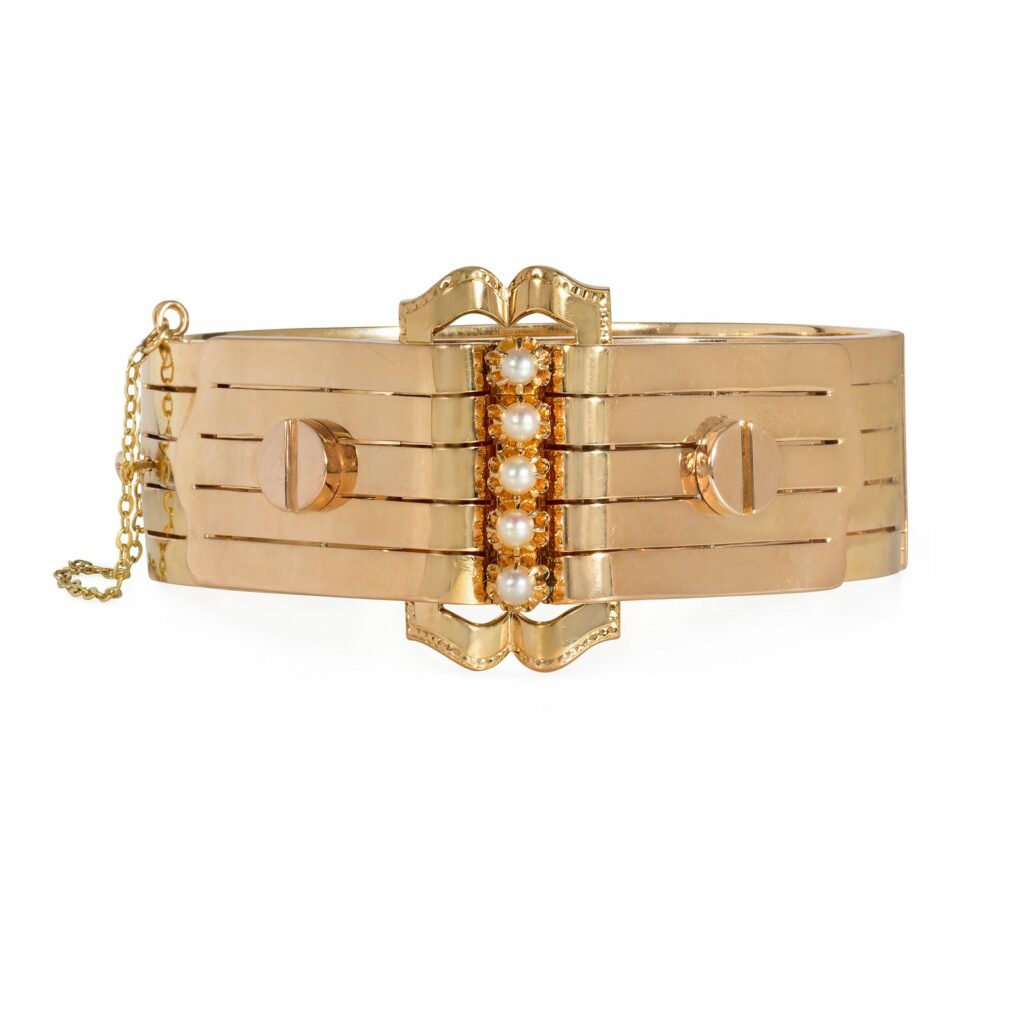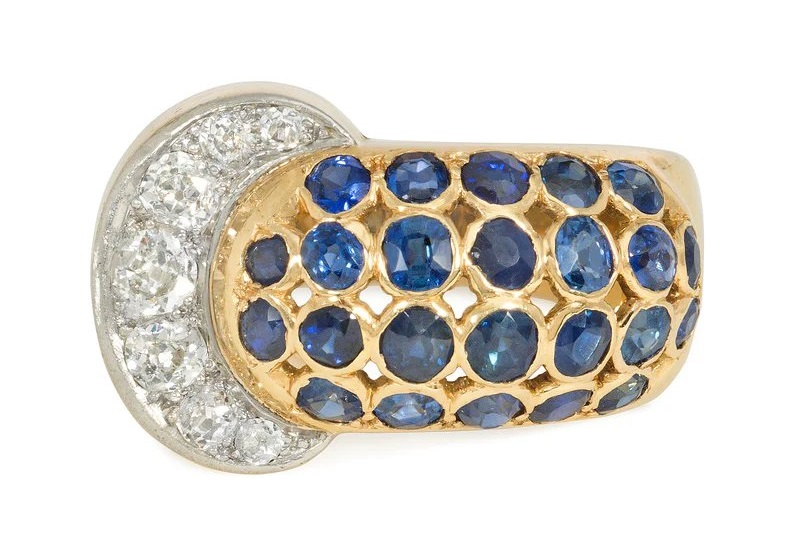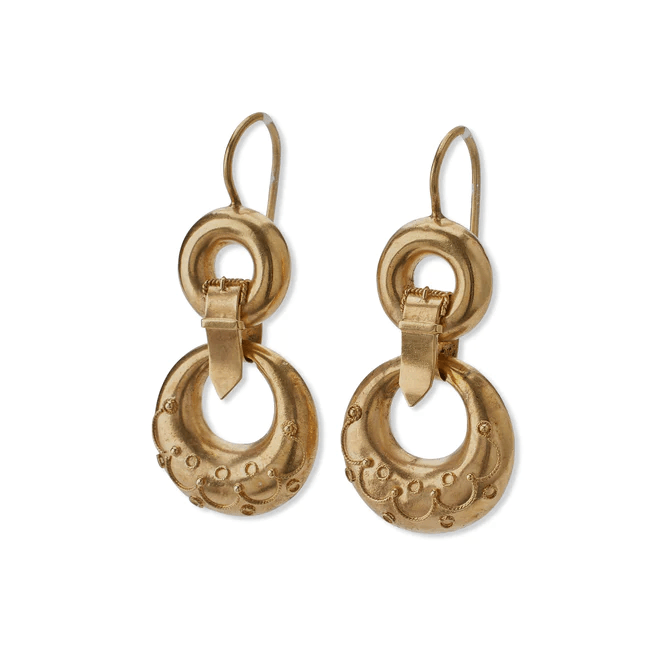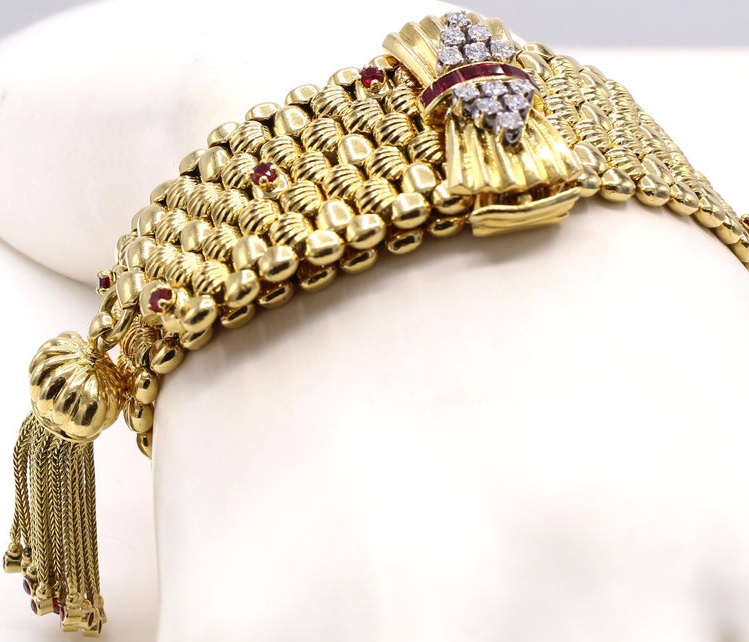People of the Victorian era adhered to a rigid set of rules that dictated behavior. They were known to be prim and proper, keeping feelings to themselves and emotions in check. However, inspired by the love story between Queen Victoria and her husband Prince Albert, the Victorians loved romance and romantic gestures. They were also experts at taking ordinary everyday utilitarian objects and turning them into something deeply meaningful, such as the humble buckle. To most of us a buckle is simply something we fasten and forget about. But not the Victorians, instead they imbued this simple object with significance beyond its practical function. They created a jewelry language that signaled their feelings and emotions to others without a word being spoken.
Beyond Romantic Love

The buckle motif was used for rings, bracelets and occasionally brooches, or earrings. But rings were by far the most important form for buckle jewelry. According to the Victorians, the buckle represents the binding of two people together in love or friendship. While we automatically jump to romantic love, buckle rings were also exchanged between siblings and best friends as a show of allegiance which was especially important among the aristocracy.
For romantic love, the rings could have various meanings. It was sometimes presented as a promise ring and sometimes it was even an engagement ring, or wedding ring. Buckle rings were a popular gift that was used to express feelings of loyalty and attachment. Between couples who were getting engaged, buckles represented fidelity, constancy and the eternal love connection that they made. The Victorians also believed that wearing a buckle ring strengthened the bond between the one giving the ring and the one receiving the ring.
Buckle Jewelry and Mourning

The buckle rings were made of precious metal that was sometimes embellished with chasing, engraving or other treatments. Sometimes they had a few gemstones adorning the ring. Buckle rings reached the pinnacle of popularity during the mid 1800s, which could have something to do with the other meaning of buckle rings: Mourning jewelry. The link between the buckle and the belt signified strength and connection during the mourning period, which in Victorian England lasted at least one year.
Buckle Bracelets
Bracelets were another popular form of buckle jewelry and buckle bracelets were often worn in pairs, either stacked on the same arm, or one on each wrist. They also were sometimes embellished with fringe or seed pearls on the end of the strap. Both items have evolved through the years. Buckle rings have become more gemstone intensive and stylized over the years while the buckle itself has morphed into a softer, rounder less literal form. These rings were popular into the middle of the twentieth century. During the 1940s, Van Cleef & Arpels introduced its Ludo collection which is a modern iteration of the buckle bracelet with a wide strap, often with a tassle and some gemstones.
A beautiful gift to the one you love, an antique buckle ring may be a very modern engagement ring for a couple that wants to share their unique perspective and commitment. Or it can just be a really cool ring that you love to wear and infuse with your own meaning. The choice is yours.
Featured image (top of page): Victorian diamond and 18-karat gold buckle ring, England, circa 1898-1899, courtesy Macklowe Gallery (@macklowegallery).
Authored by Amber Michelle


